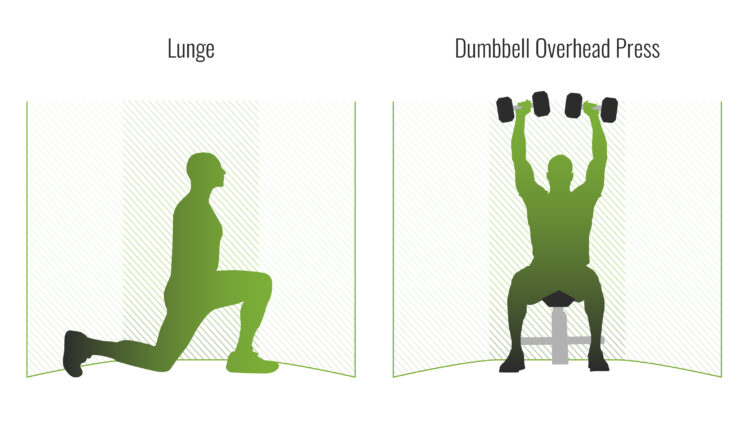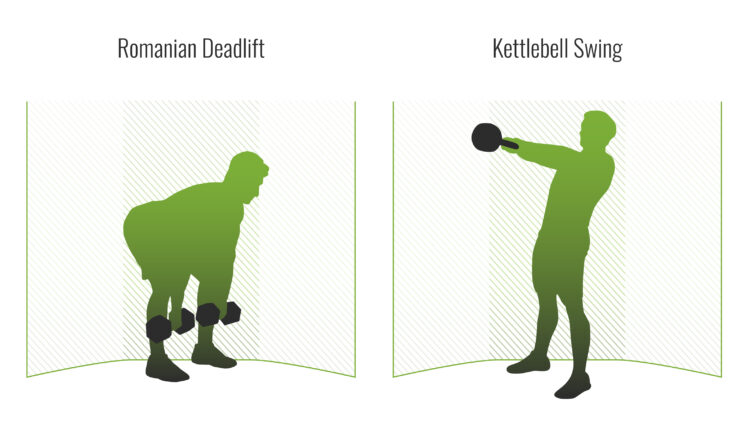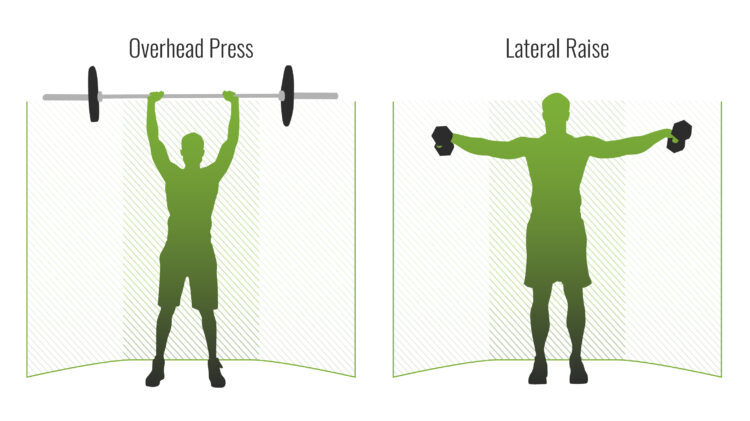Supersets have been a staple of the weight lifting community for years. Ever since the days of Schwarzenegger’s reign in bodybuilding, gym rats all over the world have been taking inspiration from his iconic superset-heavy arm workouts.
Supersets can be a potent tool to have in your training arsenal, but it can be easy to go awry and implement them improperly. To get your head around supersets as a concept and take them from theoretical to practical, we’re going to explain everything you need to know about the superset.
- Supersets Explained
- Types of Supersets
- Benefits of Supersets
- How to Program Supersets
- Superset Examples
- Frequently Asked Questions
Supersets Explained
The simplest way to define a superset is the performance of two exercises back to back with little to no rest inbetween.
A superset can take multiple forms and can be left open for the imagination when it comes to combining different movements. Some training modalities, such as barbell complexes or PAP Training, are actually inspired by supersets in the first place.
This is where the broad term of “superset” can get a bit confusing for lifters just getting started in the gym. While any two movements performed sequentially without rest would technically count as a superset, manipulating variables like relative intensity or movement selection are crucial for utilizing supersets to their full potential.
Types of Supersets
Even though the premise of supersets — going from one lift directly to another without stopping — is simple, like most aspects of working out, the devil is in the details.

Agonist-Antagonist Sets
Possibly the most common form of superset is the agonist-antagonist, or the combination of two exercises that recruit opposing muscle groups. For example, pairing two upper-body movements — one “push” and one “pull” — will let you work more of your overall musculature in less time, without having to sit around waiting for your body to recover.
This style is great for a few reasons. First, it cuts your workout time down. Agonist-antagonist supersets allow you to accumulate a lot of volume quickly so that you can squeeze a workout in on your lunch break.
[Related: Low-Impact, High-Intensity 15-Minute Kettlebell Circuit]
Secondly, they’re great for maintaining a balanced amount of stimulus. If you’re practicing agonist-antagonist supersets, you’re almost certainly stimulating all parts of your body equally, which is essential for creating a balanced physique or avoiding injuries.
Same/Similar Muscle Group Sets (PAP Training)
Performing a superset involving two exercises that recruit the same musculature takes a bit more tact. While Same/similar muscle group sets could be considered part of a complex, they can also be used primarily for hypertrophy.
You’d perform a set of bench press and then a set of skull crushers with this style of training. If we’re talking PAP Training specifically — a strength & conditioning staple meant to improve force output and sport performance — you would perform something like a squat and then an explosive movement like a box jump.
Benefits of this style of superset include stimulating more dimensions of your athletic performance — raw strength from the squat as well as explosive power from the jump — alongside higher muscular fiber fatigue, spurring additional growth.
Upper-Lower Sets
Upper-lower supersets are a form of contrast training popular for those following full-body routines or CrossFit methodology. The premise is similar to that of Agonist-antagonist supersets, but applied to the entire body.
By working your upper and lower body in sequence, one half rests while the other trains, and vice-versa. Think something like a set of lunges with dumbbells directly into a standing overhead press. This allows you to do the most work possible in the least amount of time, as well as improving overall endurance and sport performance.
Benefits of Supersets
While they aren’t the endgame of resistance training and certainly not the “next big thing,” supersets have more than a few benefits that back them as worthwhile addition to your training plan.
A Huge Time-Saver
If you’re crunched for time, supersets can help keep your workouts short while maintaining enough intensity and volume to drive progress long-term. If you have eight exercises on your platter for the day, grouping them into four pairs of two supersets speeds things up quite a bit.
[Related: The Real Reason Your Progress Isn’t Linear]
Additional Power Output
If you practice complex-style supersets or PAP training specifically, there are benefits to be reaped in the arena of explosiveness. Priming the muscles with a strength exercise (a core tenet of PAP training) can set you up to jump further and faster, and plyometric work tends to fit nicely alongside a strength-focused movement.
Metabolic Improvements
This is a facet of all superset training, but cardio can become the centerpiece if you opt for more reps per set or exercises involving more bodily movement. Supersets can be a fun way to get your heart pumping if you don’t have the right equipment.
Increased Hypertrophy
The primary driver of putting on size in the gym is how much fatigue you can accumulate (and then recover from, of course). Whether it’s doubling down on stimulus by attacking the same muscle twice in a row, or tag-teaming your arm day to fully fatigue yourself in just a few minutes, supersets can be deadly when it comes to muscle growth.
How to Program Supersets
If you’re programming supersets into your workouts, then you should consider a few training variables to ensure you stay happy, healthy, and on the road to progress.
Know Your Goals
If your primary goal is efficiency, then an upper-lower superset might be best for you. If you care most about packing on as much size as possible, same-muscle supersets are probably up your alley.
[Read More: The Best Biceps Exercises for a Muscle-Building Workout]
Knowing where you want to go with your training is the first step towards actually getting there and affords you the opportunity to put in the work where it matters.
Exercise Order
Compound, or multi-joint movements, should always come first. You don’t want to be physically/mentally fatigued for a lift that will offer the greatest benefit by doing it second in a set.
If you’re pairing a big, multi-joint exercise with a smaller isolation one, make sure you’re doing the meat-and-potatoes work first.
Intensity
Pay attention to how intensely you’re performing each movement. You may have to tweak and cater supersets to your level of fitness. Remember that you’re performing a single set of two distinct movements, which will increase the demand placed on your body. Err on the side of easy the first time you implement a new superset to your workouts.
A good way to scale your intensity is by taking it easy on the first movement of your superset and then putting in higher effort on the second half, so you can get some well-earned rest time right after.
Superset Examples
With the “what” and the “why” on paper, explaining exactly how to utilize supersets is simple. A few sample selections should set you on the right path towards integrating them into your own workouts.
Agonist-Antagonist — Hammer Curl + Dumbbell Skullcrusher
Perform a set of hammer curls with dumbbells for eight to ten reps while sitting on a bench, then immediately sit back and do a set of skullcrushers to torch the arms.
Same Muscle/PAP — Dumbbell Row + Dumbbell Pull-Over
Do a set of either single or double-armed dumbbell rows, then take one of the weights and go right into a set of dumbbell pullovers while lying on the bench for a one-two punch combo targeting the lats.
Upper/Lower — Romanian Deadlift + Upright Row
Finish a set of Romanian deadlifts before going directly into a set of barbell upright rows. While you may need to pause briefly to reduce the weight, going from one barbell lift to another should still be a huge time-saver.
FAQs
If you’re still a little fuzzy on what supersets are or if they’re right for you specifically, we can take it another step further and look at common questions directly.
What are supersets?
A superset is the pairing of two exercises performed back-to-back with minimal to no rest in-between.
What are some benefits of using supersets?
Superset benefits all come down to their programming and rationale for use. They are a great time saver in the gym, could benefit your power output, and provide heaps of extra muscular stimulus.
Who can use supersets?
As long as your rationale for including them makes sense, anyone — including rank beginners — can make use of supersets. That being said, if you’re just starting out with your first workout routine, the additional intensity provided by supersets may not be necessary for you to progress.
Wrapping Up
At a glance, supersets make for a useful way to save you time during your workouts. However, there’s more to them than meets the eye, and more benefits than you might think — if you know what you’re doing.
Whether it is getting a lot of work in quickly with upper-lower supersets, blasting your biceps with a same-muscle superset of curls, or fully engaging your quads and hamstrings with an agonist-antagonist superset, there’s enough variability to make supersets a worthy inclusion to any routine.
Featured Image: Michael D. Edwards / Shutterstock


